My Puppy Cries When I Leave the Room (Solutions)
Adopting a puppy is one of the most magical moments in a dog parent’s life. As you introduce your new best friend to its forever home, you can’t help but feel like it was always meant to be by your side.
There’s just one problem, though: your new pup starts whimpering and whining when you turn your back on it. How are you supposed to get anything done when it is making that heart-wrenching sound?
Don’t worry—we’ve got you. In this article, we will give you some insight into why your puppy is crying and provide training tips to help your pup learn to tolerate separation.
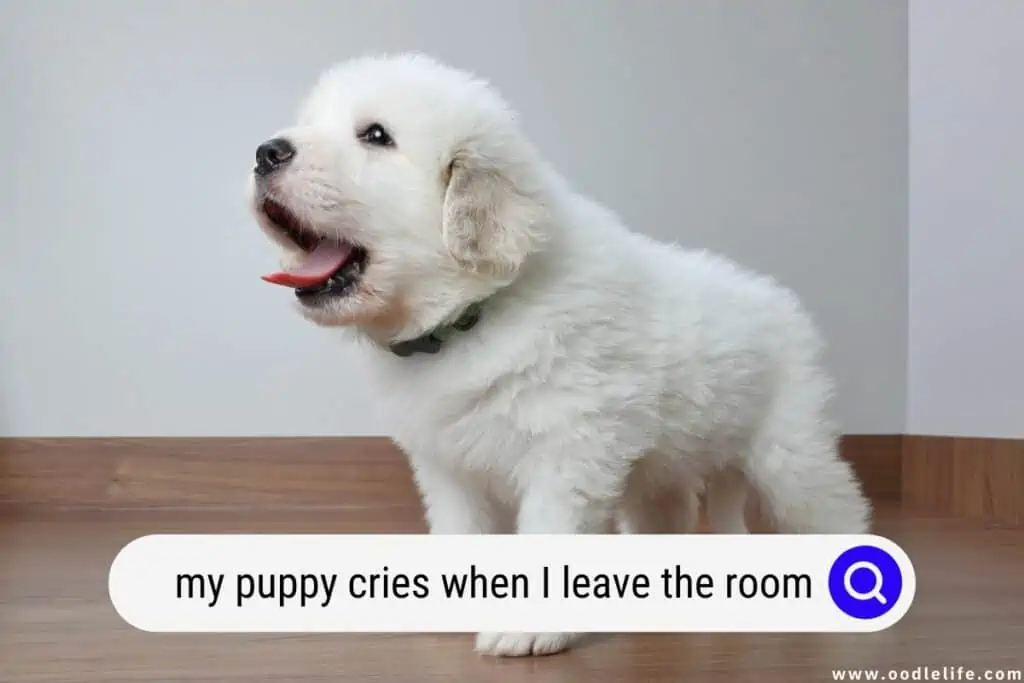
Why Do Puppies Cry?
Puppies cry for essentially the same reason that human babies do: they want or need something from their caregiver. Like babies, puppies are born with the instinct to cry in response to hunger, pain, and other emotional and physiological stressors.
For puppies, separation is one such stressor. Domesticated dogs are pack animals, just as their wild ancestors were, so puppies are born with the instinctual need to stick close to their pack—meaning you—until they are older.

How Much Crying Is Normal for Puppies?
A young puppy recently separated from its littermates is not used to being left alone, so its barking and whining is a perfectly natural response to you leaving. Crying in response to separation becomes problematic if it continues as the puppy matures.
If your puppy continues to cry when you are at home despite all of its needs being met, check in with your vet—this can be a sign of pain or sickness.
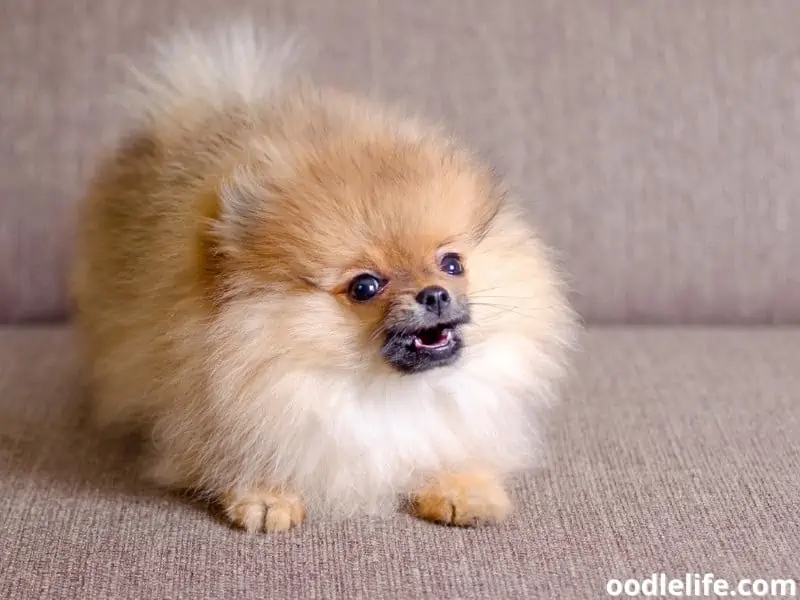
Is It Bad To Leave a Crying Puppy Alone?
“I can’t stand hearing my puppy cry when I leave the room. It breaks my heart!” As long-time dog parents, we’ve been there. It might be emotionally painful to turn away from your beloved pup’s pleas, but indulging it can be harmful in the long run.
You must learn to distinguish between instances when your puppy needs your help and when it is crying just because it doesn’t want you to leave. If all of its needs have been met and it is not engaging in destructive behavior, you shouldn’t reward its crying with attention.
A puppy who never learns to feel safe alone can develop separation anxiety. For the sake of its health and your sanity, you must gently train it to tolerate separation.
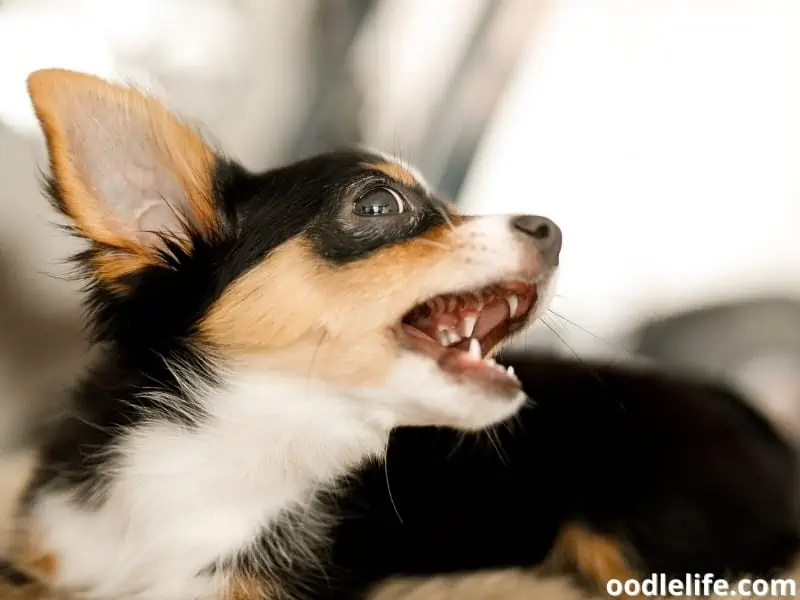
Tips for Teaching Your Puppy To Cope With Separation
Begin Crate Training Immediately
As soon as your puppy arrives at its forever home, start acclimating it to its crate—see our crate training guide for more info!
Although putting a puppy in a crate might seem like a cruel form of imprisonment from a human perspective, dogs are naturally inclined to seek out den-like spaces for rest. If training goes well, your pup’s crate will quickly become its haven. Having this safe space to curl up in when you’re away can reduce its anxiety at being left alone.
Remember, you won’t always have to crate your puppy when you leave the house. After your dog is house-trained and used to being alone, it can be safely left to its own devices without confinement.
While most dogs are amenable to crate training, some don’t take it well. If yours still can’t handle being crated after you’ve gone through a proper training regimen, consult a professional trainer or consider an alternative enclosure option (e.g., a dog playpen).
It is important to note that puppies under the age of six months cannot be left in a crate for longer than three to four hours, as they need to relieve themselves more frequently than that.
Crate training takes a long time—up to half a year—so be patient! The benefits of crate training are worth the wait.
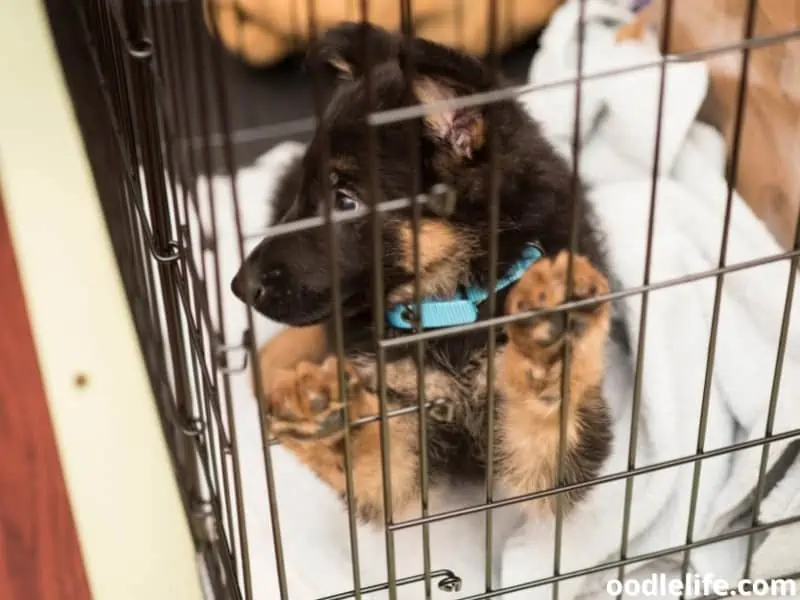
Start With Small Steps
Don’t jump straight to leaving your new puppy alone for hours! Start very small: leave your pup in its crate or other enclosure with its favorite toy, and then walk out of the room for up to a minute. As soon as you return, offer a reward in the form of a treat and calm praise.
If your puppy starts freaking out, reduce the time of separation until you’ve reached an increment that it will tolerate. Watch carefully for signs of stress like panting, trembling, and pacing—you want to ensure that your puppy is completely relaxed and calm throughout the process, as the training will not work otherwise. Slowly build up to longer periods of alone time.
Eventually, your dog should be able to tolerate up to eight hours alone at home.
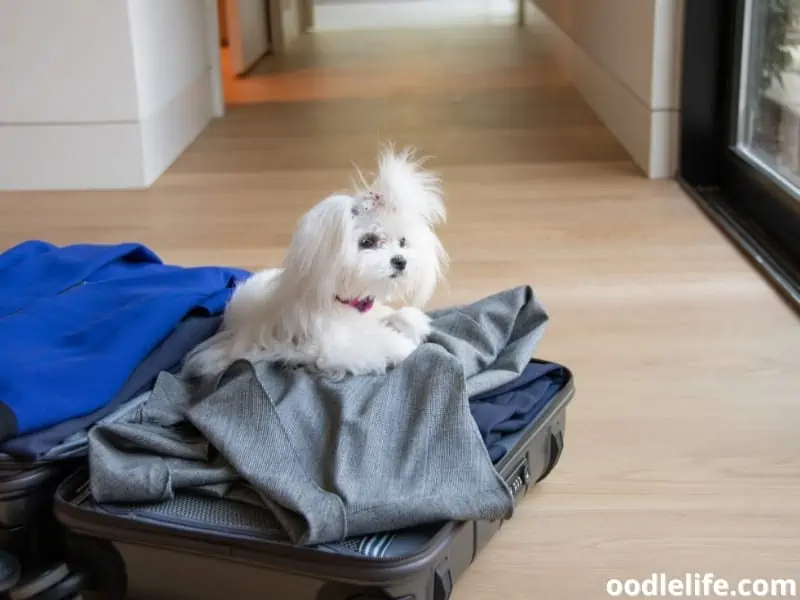
Establish a Routine
Puppies thrive on routine for many reasons. They have to eat often, go to the bathroom often, and play often; the best way to ensure that these needs are consistently met is to build your schedule around them. Sticking to a daily routine will give your puppy the stability it needs to feel secure when it is alone.
Leaving and coming back home at the same time every day can also help your puppy to learn that separation is mundane and nonthreatening.
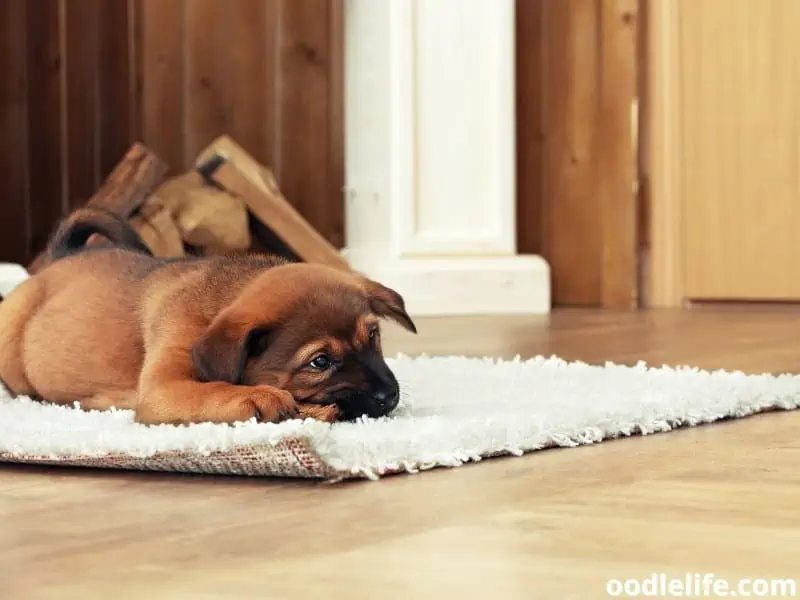
Leave Quietly
We know how hard it is to resist showering your puppy with kisses and goodbyes when you leave. Unfortunately, doing so can make your puppy anxious by cluing it in to the fact that you are going away. Instead, slip out of the door quietly while your dog is busy with a favorite toy or treat.
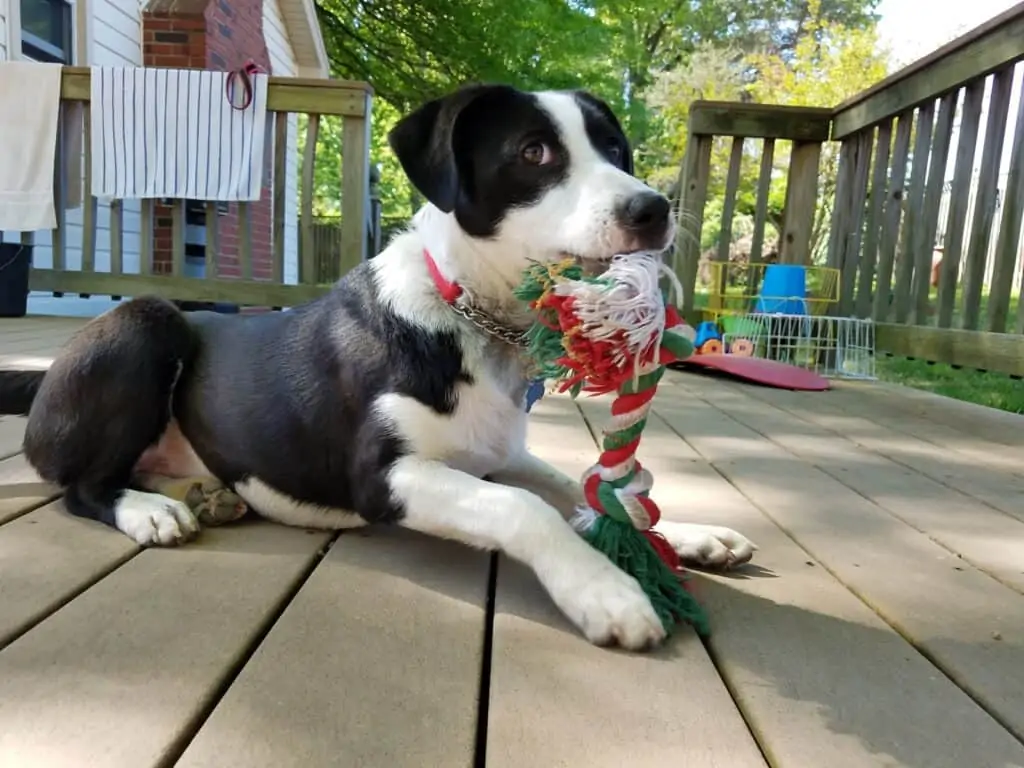
Come Home Without Fanfare
You might want to scoop up your pup and give it a big hug as soon as you get home, but this can make it overexcited to the point of agitation; instead, calmly take it outside for a bathroom break, and save the cuddles for later.
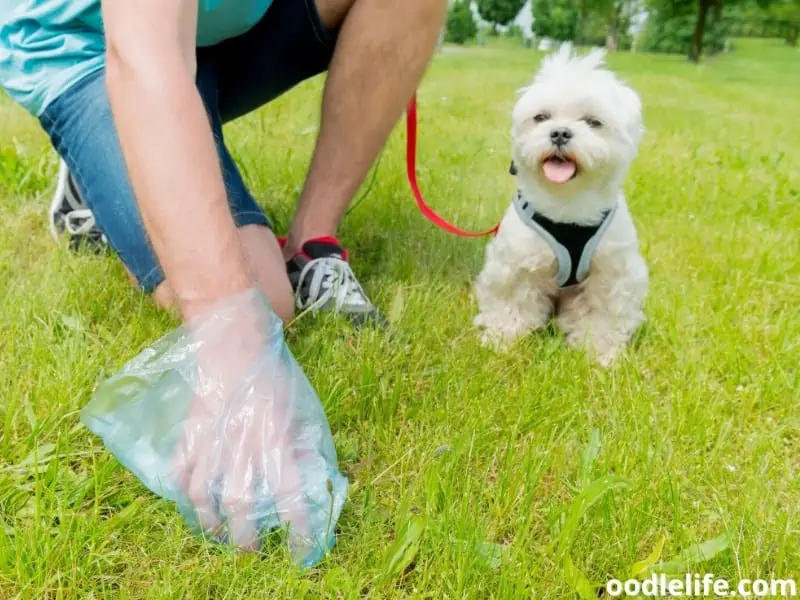
Tire That Pup Out
Before you leave, take your puppy outside to play and relieve itself. Burning off excess energy will make it calmer or even sleepy by the time it has to go into its crate.
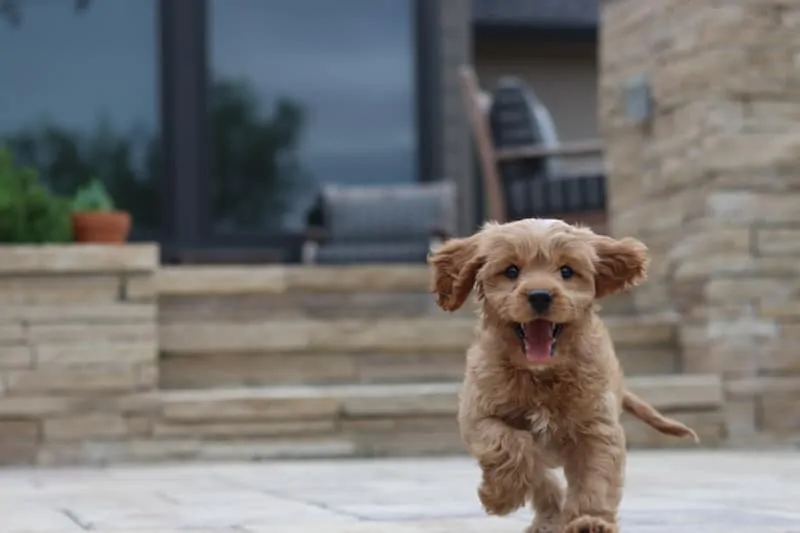
Create Positive Associations
Always leave your puppy with a safe toy to keep it busy. A treat-filled, interactive toy like a Kong can be a fun, engaging choice. Avoid small toys and treats that a puppy can choke on.
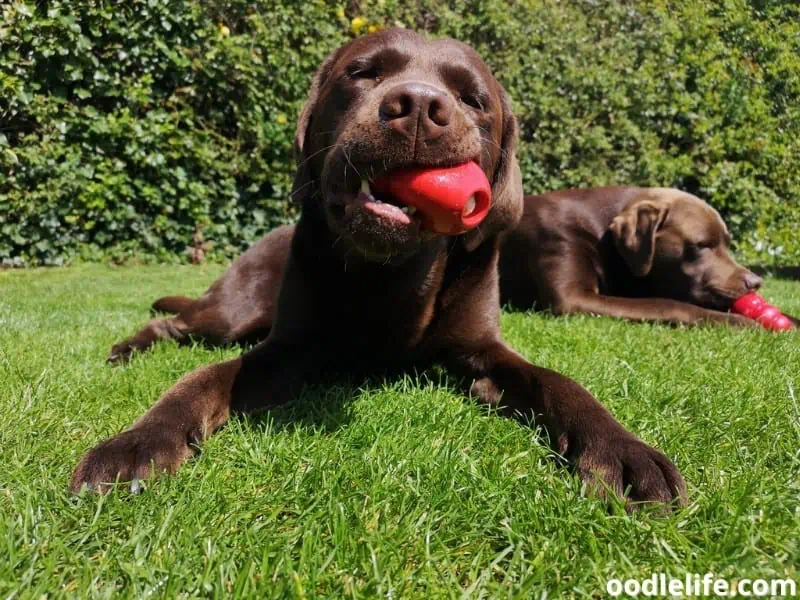
Hire a Dog Sitter
As mentioned above, a puppy must be let outside every three to four hours for a potty break. If you plan to be out of the house for longer than that, you need to hire a dog sitter or dog walker to keep your pup company and ensure that its needs are being met.
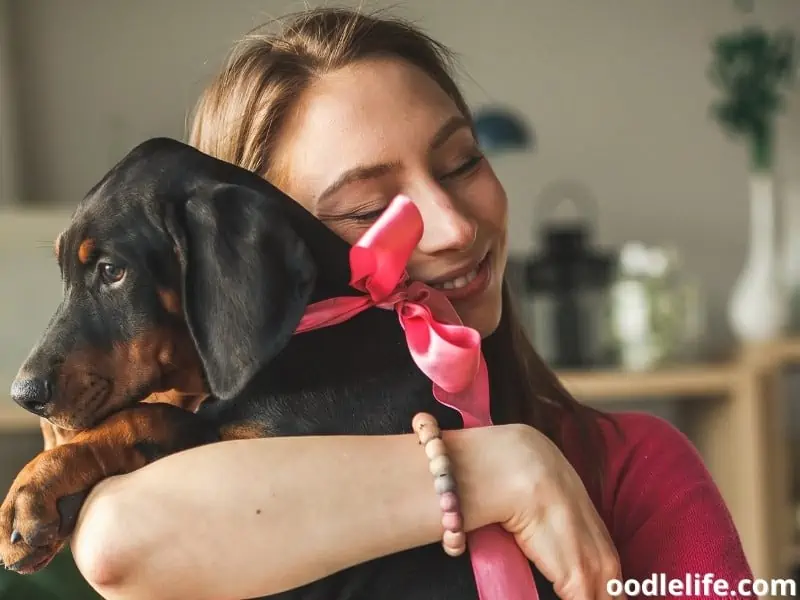
What To Do if Your Puppy Has Separation Anxiety?
You’ve gone through all of the steps above, but no matter what you do, your puppy cries when you leave the room. What should you do next?
Check for Symptoms of Separation Anxiety
At this point, you need to determine if your puppy has developed separation anxiety. Some common symptoms include:
- Urinating and defecating indoors, but only when left alone.
- Constant howling, barking, and crying when you’re away.
- Attempting to escape from enclosures.
- Chewing, digging, and other destructive behaviors.
- Compulsive behaviors like paw-licking.
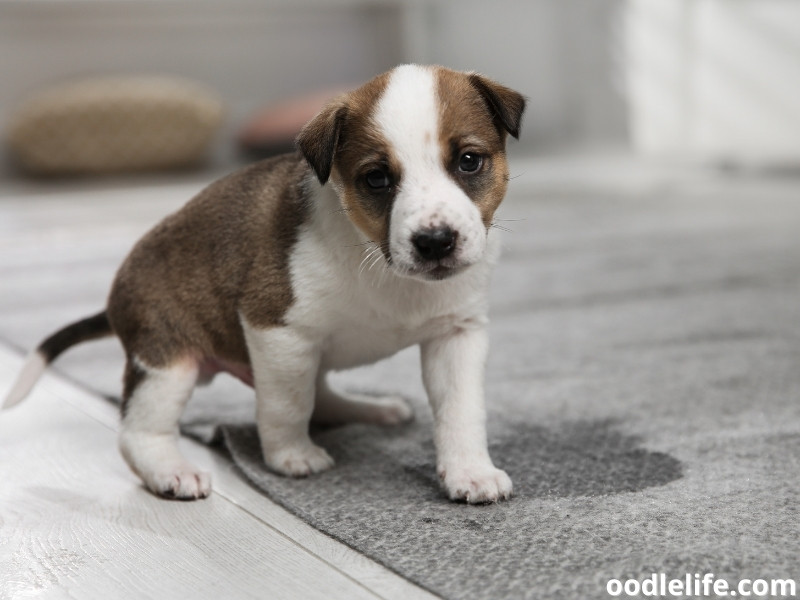
Seek Professional Assistance
If your pooch seems to be displaying symptoms of social anxiety, check in with a vet to confirm the diagnosis and rule out other problems.
Your vet might recommend that you seek help from a dog trainer or an animal behaviorist. These professionals can treat your dog’s anxiety through counterconditioning and desensitization techniques, which minimize the fear response through exposure and the application of positive stimuli.
Your vet might also prescribe anti-anxiety medication like fluoxetine or clomipramine to your dog or suggest a natural therapy like CBD oil.
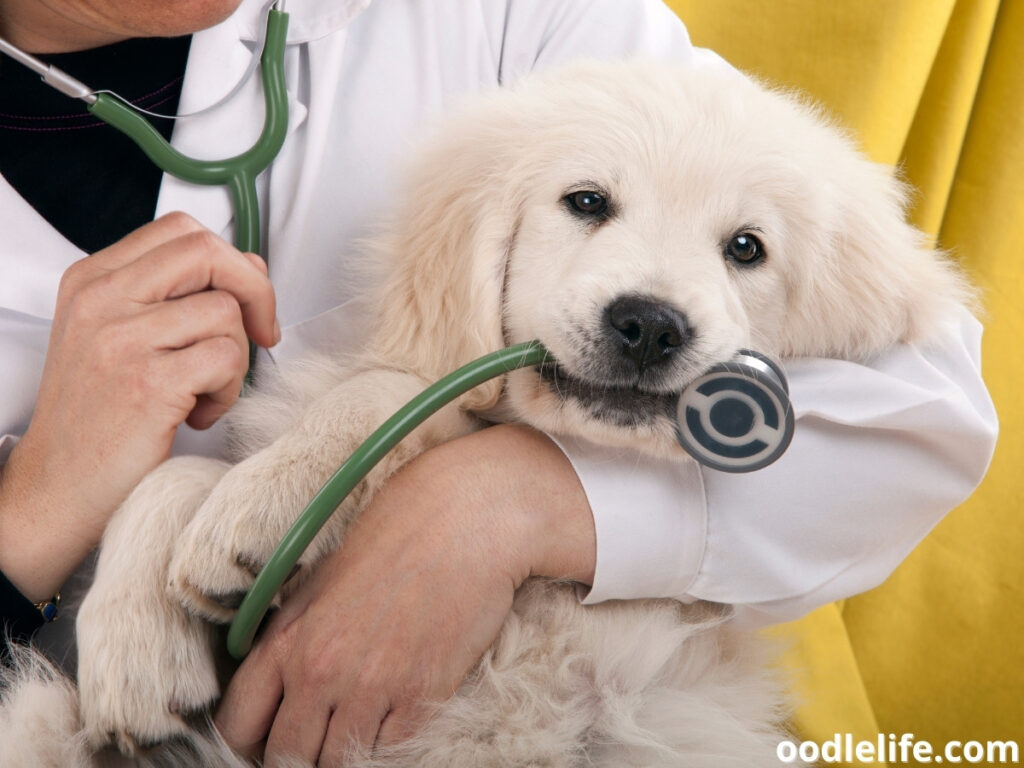
Don’t Try To Fix Things With Another Dog!
Although adopting a friend for your pup might seem like an intuitive solution, it can make separation anxiety worse.
Your dog isn’t anxious because it is lonely—it is anxious about your absence. Also, your second dog can learn to be anxious about separation from your first dog, thus doubling the original problem!

Final Thoughts
With the right training, your crybaby pup can soon learn to be calm and secure in your absence. This training requires patience, time, and dedication on your part, but we’re sure you’ll agree that your puppy is worth the trouble. If your efforts aren’t producing results, though, don’t be afraid to seek help from a vet or dog-training professional.
Good luck—to both you and your puppy!